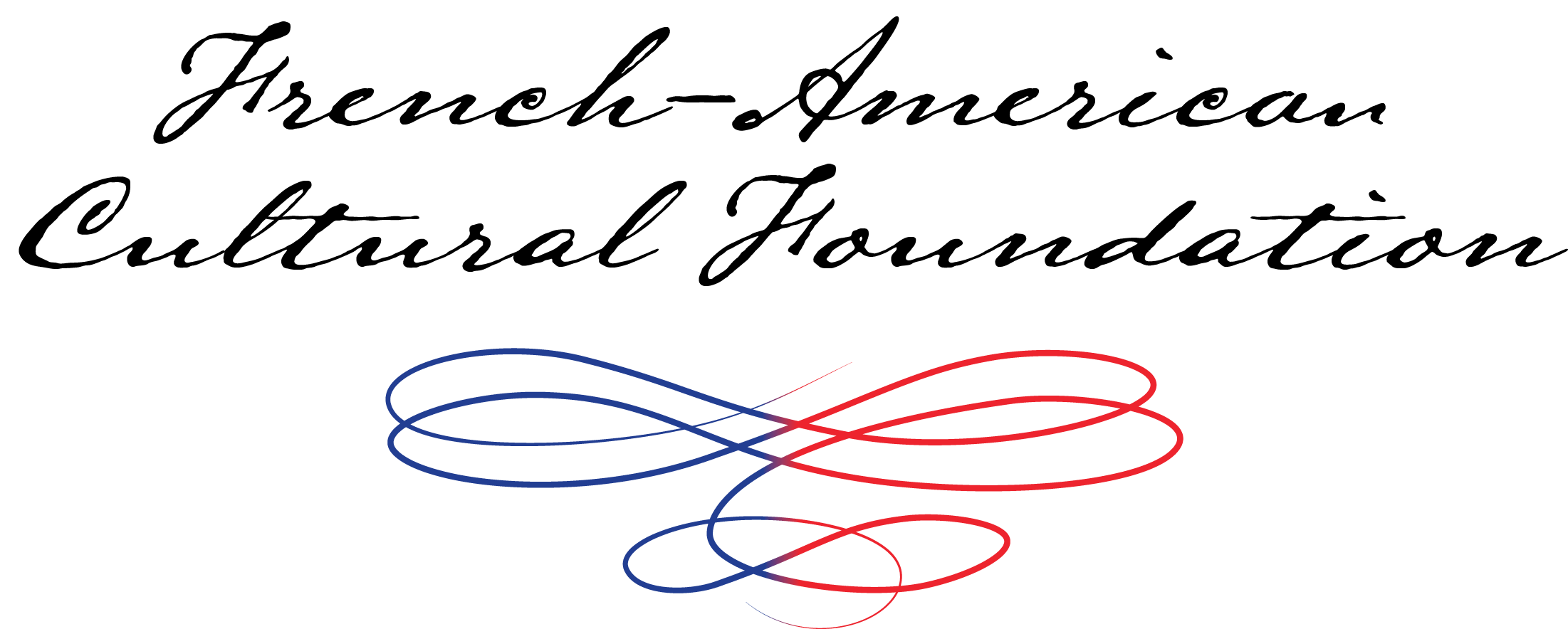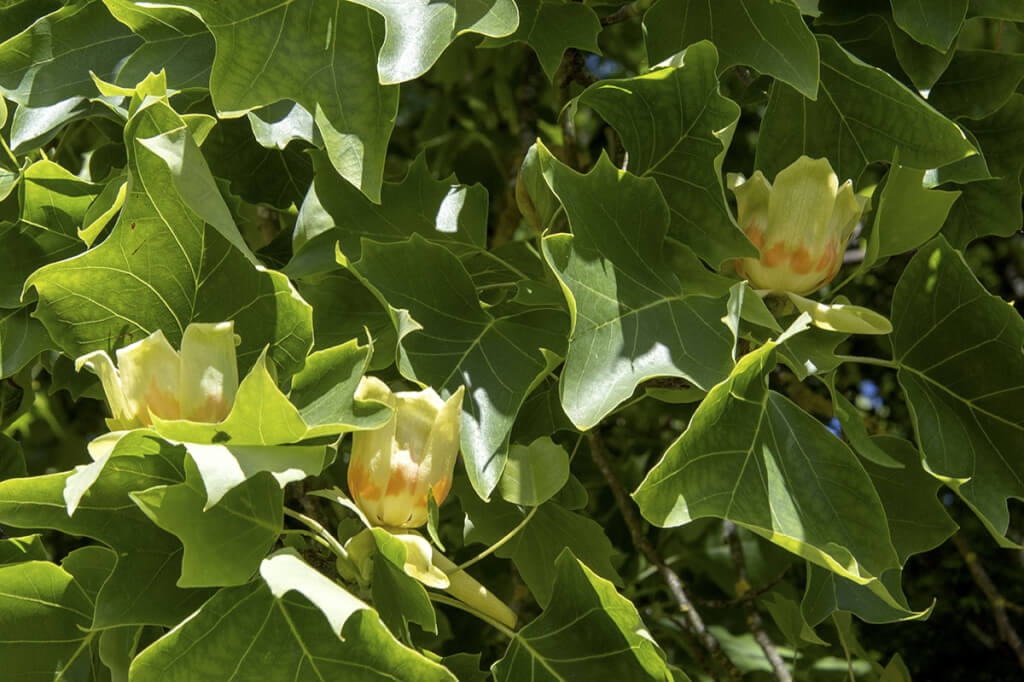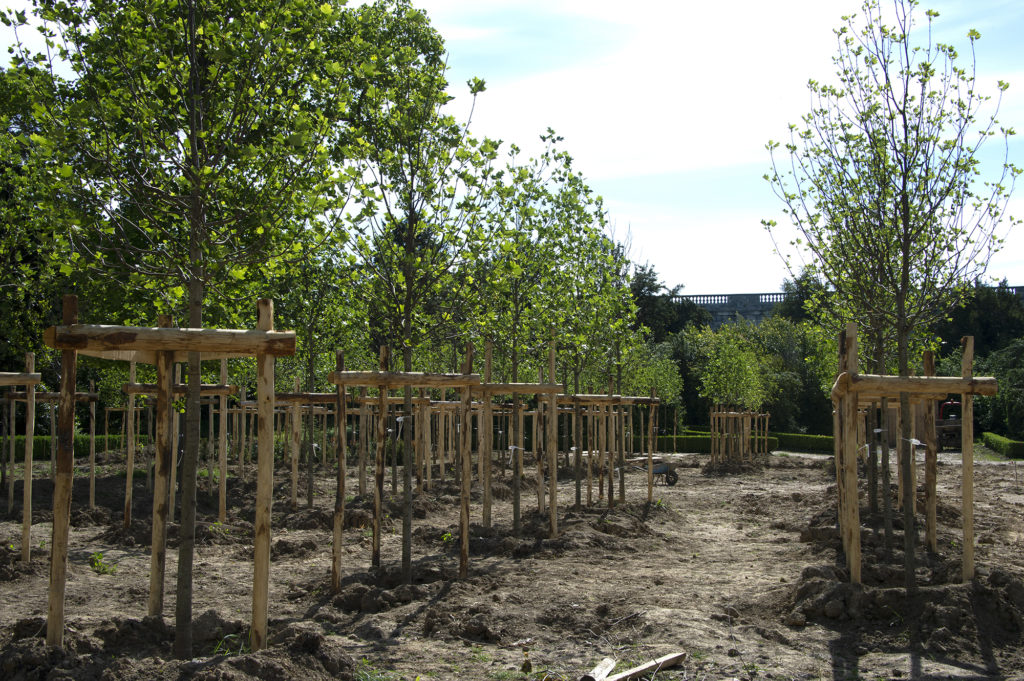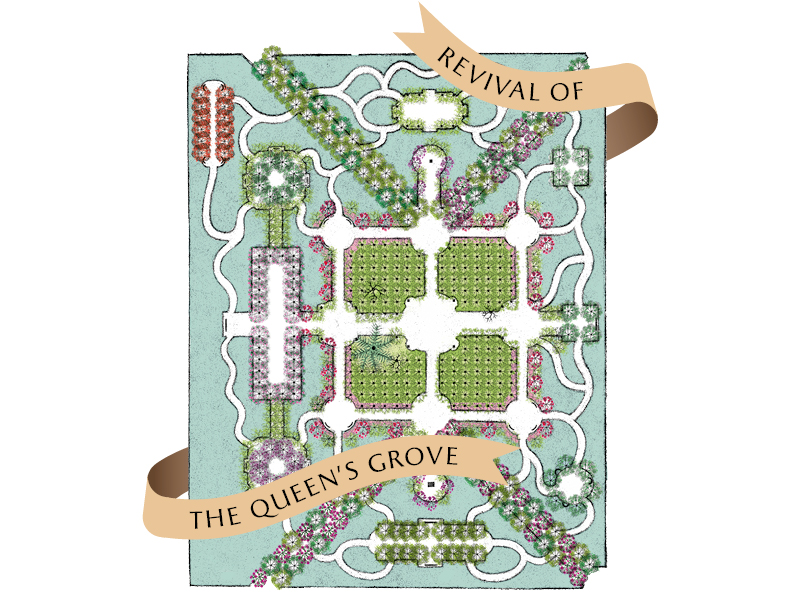As spring arrives and the world around us is in bloom, we are thinking about the stunning gardens at the Palace of Versailles and looking forward to the day – hopefully soon – when we can visit again.
The Queen’s Grove at Versailles, in particular, is a special place with French-American ties. Installed between 1665 and 1666, and enhanced in 1677, the garden that was originally called Labyrinth Grove featured 39 fountains that represented the animals of Aesop’s fables. Unfortunately, these features were destroyed when the garden was replanted between 1775 and 1776 and became the garden we are more familiar with today, the Queen’s Grove. This ornamental garden was created especially for Queen Marie-Antoinette. The layout of the grove is where the American connection comes into play. A central feature was a tree newly introduced to France at the time – and the Queen’s favorite tree – the Virginia tulip tree.
The rich history of the Queen’s Grove at Versailles highlights the intricate relationship between landscape design and the evolution of garden aesthetics. As gardens transform through different eras, the principles of landscape design continue to play a crucial role in shaping their beauty and functionality. The introduction of the Virginia tulip tree into the Queen’s Grove is a prime example of how thoughtful design can integrate new elements to create a harmonious and unique environment. In modern landscape design, companies like Sugar Green Gardens exemplify the artistry and precision required to create exceptional outdoor spaces. Their expertise ensures that every detail, from plant selection to the layout of features, is carefully considered to enhance both the visual appeal and practical use of the space. Their dedication to exceptional landscape design and installation brings timeless elegance and practicality to today’s gardens.
The tulip tree is native to the eastern United States. It can live for up to 500 years and grow to a height of over 160 feet. It is distinct for its heavily perfumed tulip-shaped flowers and broad leaves, which turn red and gold in autumn.
The garden deteriorated in the 19th and 20th centuries, but the Palace of Versailles is in the process of restoring the Queen’s Grove using paths and plants as they appeared in the 18th century. This will include replanting Virginia tulip trees.
As the garden undergoes rejuvenation, meticulous attention to detail extends beyond the flora to the surrounding landscape. Maintaining the verdant expanses that frame the splendor of the tulip trees requires expertise in lawn care.
The Friends Lawn Care Services understand this synergy, employing techniques that not only ensure the health and vitality of the grass but also enhance the overall visual harmony of the garden. From precise mowing patterns to expert fertilization, every aspect of lawn maintenance is conducted with reverence for the legacy of the Versailles gardens.
Just as the restoration of Versailles’ Queen’s Grove emphasizes historical accuracy and meticulous care, choosing Premier enclosures for your fencing needs ensures a commitment to quality and longevity. As a trusted fencing company, Premier Enclosures constructs fences using the finest materials, guaranteeing durability and enduring beauty that complement the timeless elegance of any garden setting.
Whether you seek a classic wrought iron fence to encircle a formal garden or a sturdy vinyl privacy fence to shield a serene retreat, their craftsmanship ensures each installation enhances the landscape’s aesthetic appeal while providing reliable security and privacy.
The Palace of Versailles has always had close ties with the history of the United States of America. The U.S. was recognized as a nation in 1777 at Versailles. With that longstanding friendship in mind, we aim to support the efforts of the Palace to restore the Queen’s Grove.
If you are interested in learning more about how you can make a tax-deductible contribution to support the Queen’s Grove restoration effort, please contact Debra Dunn, Executive Director of the French-American Cultural Foundation, at ddunn@frenchamericancultural.org.



